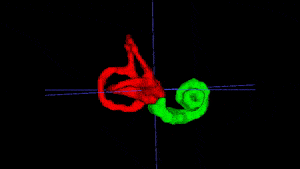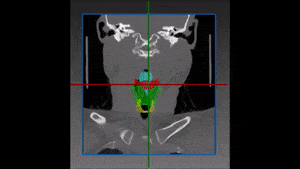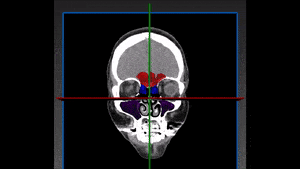Ear pathologies are common in all age groups, and are one of the leading causes for visiting a doctor. In most cases, proper diagnosis can be achieved via clinical examination. However, in recurrent or complicated cases imaging of the ear is indicated and can help with treatment choice.

The human ear is in charge of two separate functions – hearing and maintaining balance. Its complex structure includes the outer ear which collects sound waves, middle ear which conducts the sound to the inner ear, that is located within the temporal bone, and consists of the vestibular apparatus and the cochlea.
Due to its intricate structure, many pathologies can potentially arise within the different parts of the ear, for which imaging such as computed tomography (CT) or magnetic resonance imaging (MRI) may be indicated. CT aides with assessing the osseous structures of the ear, while MRI is especially good for imaging of the vestibulocochlear nerve, the brain and other fluid-filled spaces. Ear imaging is useful for evaluation of congenital sensorineural hearing loss, vestibular schwannoma and cholesteatoma.
Imaging is also used for surgical planning by allowing the surgeon to better visualize the tumor that needs to be resected, or choosing the best drilling trajectory and appropriate electrode measurements for cochlear implant surgery. Moreover, 3D segmentation of the middle and inner ear may help with minimizing surgical complications including damage to nearby vessels or nerves. For example, damage to the facial nerve could result in facial paralysis.
Therefore, 3D segmentation of the ear generated from CT and MRI images is useful for demonstrating the complex anatomical structures, and by doing so – minimizing complications and allowing better surgical planning and precise diagnosis.
Automated Middle and Inner Ear Segmentation
For this task, a proprietary deep learning model based on a fully convolutional neural network was developed by RSIP Vision. The complexity of the structures and their fine details are met by the network thanks to the cutting edge technology implemented within our model. Take us along for you next deep learning project!

 ENT
ENT
